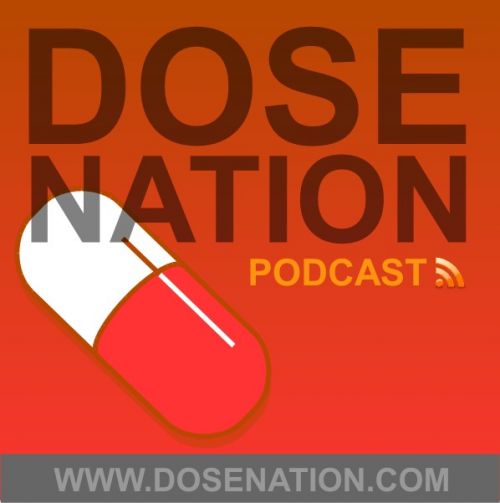Researchers Map Out Specific Effects of Ecstasy on Memory
Taken from a presentation at the 19th Congress of the European College of Neuropsychopharmacology (ECNP). PARIS, FRANCE -- September 19, 2006 -- Associative memory dysfunction among heavy users of ecstasy (3,4-methylenedioxymethamphetamine) as well as among poly-substance users shows an underlying neurophysiological correlate that includes a network of prefrontal, visual and temporal brain areas.
However, impaired performance is largely due to amphetamine use, rather than ecstasy, whereby these two agents have different, and generally opposing, effects on the activities of the networks engaged during associative memory, according to results of a study presented here at the 19th Congress of the European College of Neuropsychopharmacology (ECNP).
This study is part of the large, multicentre, Netherlands ecstasy Toxicity (NeXT) study and was presented by Gerry Jager, PhD student, Rudolf Magnus Institute of Neuroscience, under the joint supervision of 2 of her co-investigators, Rene S. Kahn, MD, professor, Rudolf Magnus Institute of Neuroscience, University Medical Centre Utrecht, University of Utrecht, Utrecht, and Wim van den Brink, MD, professor, Academic Medical Centre, University of Amsterdam, The Netherlands.
"The main question of the programme is if there is evidence for toxic effects of ecstasy on the human brain and on brain function," Jager outlined. This question is being analysed through 3 large substudies, a prospective cohort study evaluating 188 high-risk subjects before and after first ecstasy use, a retrospective cohort study of 50 ecstasy users, and a cross-sectional study of 71 heavy users of extensive poly-substances and ecstasy.
The presentation on September 17th was from the last of these studies, in which the researchers looked at behavioural measures, neuroimaging and functional neuroimaging with blood oxygenation level dependent (BOLD) fMRI. Jager focussed here on the associated memory dysfunction revealed through fMRI in heavy ecstasy poly-substance users.
The study enrolled 71 subjects who were 63% males and had a mean age of 23 years (range, 18-37 years), a mean intelligence quotient (IQ) of 102 (range, 88-122), and a mean Edinburgh Handedness Inventory of 0.81 (range, 0.33-1.0). Their drug use profile included mean lifetimes of 339 ecstasy pills, 151 amphetamine doses, 72 cocaine (cocaine) doses, and 1,282 cannabis joints.
To remove background use and crossover correlation, the definition of the subjects as users of each of these substances, respectively, was set for >5 pills, >10 doses, >10 doses and >50 joints. This indicated approximately 50% of subjects as ecstasy and cannabis users, and about a third as amphetamine and cocaine users, Jager indicated. "This does not mean that these are the same people, so those that use a lot of ecstasy are not automatically the ones who also use a lot of cocaine or amphetamines," she noted.
However, low levels of correlation remained between ecstasy with amphetamine (0.44) and cocaine (0.55), and amphetamine with cocaine (0.45), so use of these agents did remain interrelated.
The associative memory task was based on a repeated sequence approach (4x) involving periods of rest, associative learning, simple classification, and retrieval, prior to performance testing. Overall, the comparison between ecstasy users (n = 33) and non-users (n = 37) showed the same classification abilities, there was a significant decrease in the recognition phase between these 2 groups (P < .01).
For the fMRI study, the brain regions of interest (ROIs) were the ventrolateral prefrontal cortex, (para)hippocampal region, dorsolateral prefrontal cortex (DLPFC), middle occipital gyrus (MOG) and anterior cingulated cortex (ACC).
The data was entered into a linear regression analysis for associative memory performance and brain region activity, including the 9 ROIs where the mean signal was given by the differences between the associative processing and simple classification tasks, to give the associate-learning-specific brain activity.
Eight predictor factors were included: ecstasy, amphetamine, cocaine, cannabis, alcohol and nicotine (tobacco), and IQ and gender. The researchers used a conservative regression model to estimate the strength of the effect of ecstasy on brain activity, through an indication of the percentage of variance in performance or brain activity predicted independently by ecstasy use, after controlling for all other factors.
Within the range of relationships seen, there were significance increases in ROI activities for the following: ecstasy, right MOG (P < .01); amphetamine, right DLPFC (P = .001); and cocaine, left DLPFC (P < .05). Significant decreases were seen for the following: ecstasy, left DLPFC (P < .05); amphetamine, right MOG (P < .05) and left PHG (P < .05); tobacco, right MOG (P < .05).
As an overall performance relationship, the only significant effect seen was for a decreased activity due to amphetamine use (P < .01).
Jager stressed that the underlying neurophysiological correlate of associative memory dysfunction in these heavy ecstasy users includes a network of prefrontal, visual and temporal brain areas.
When asked to speculate further on individual variabilities and susceptibilities for central neurotoxic effects of ecstasy, she added, "One of the factors that is very important, I think, is the pattern of ecstasy use, especially with the binge pattern of use, so taking a lot of tablets in 1 evening -- as a lot of ecstasy users do -- which might be especially risky for the neurotoxic effects, rather than the total lifetime exposure."
[Presentation title: Specific Effects of Ecstasy on Memory: A New Approach to Investigate Neurotoxic Effects in Poly-Substance Ecstasy Users. Abstract S.07.06]
¤ Link
Tags : ecstasy MDMA amphetamines memory
Posted on: 2006-09-19 12:33:58
|

